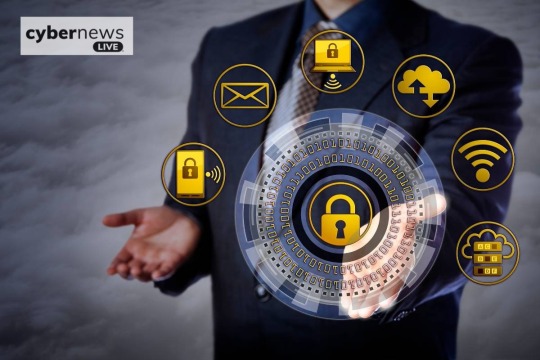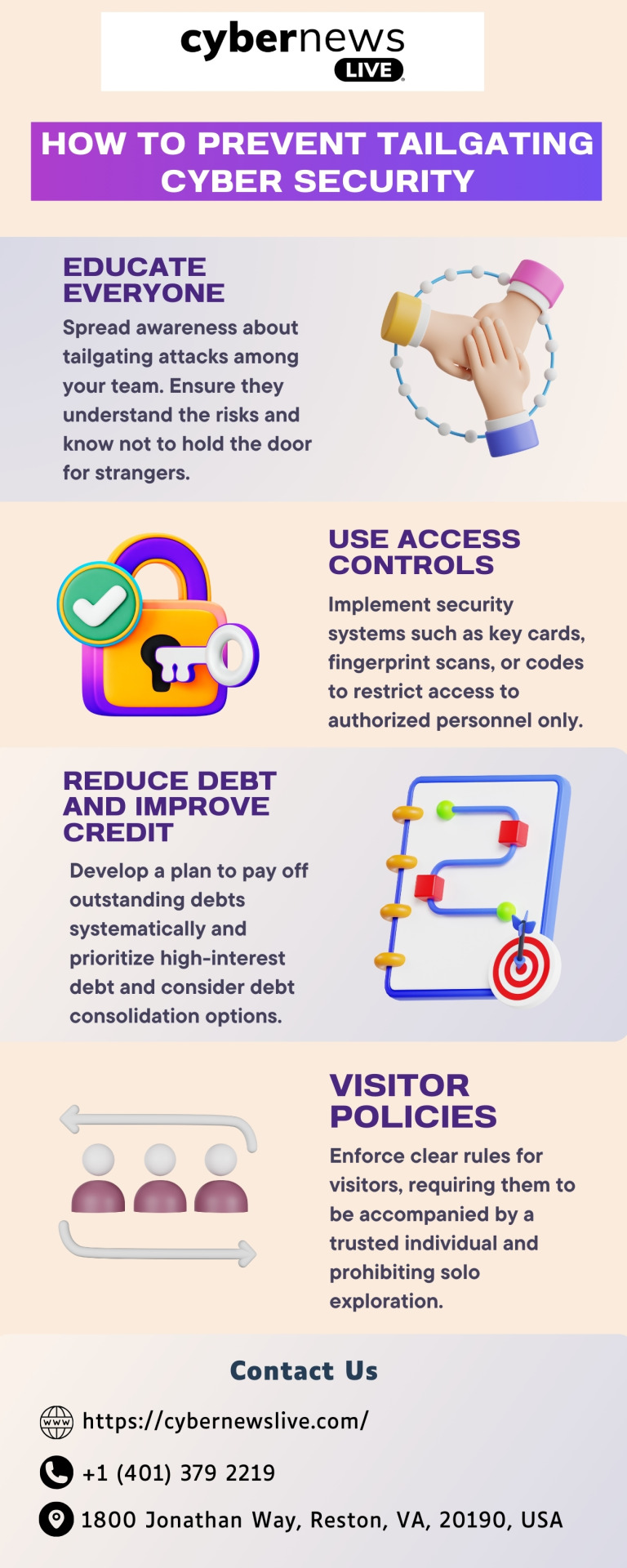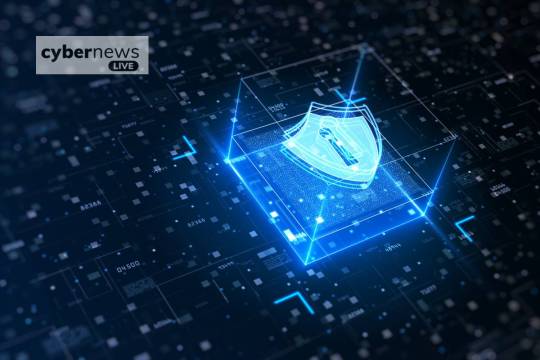Text
Cyber warfare poses severe threats to national security by targeting critical infrastructure. Definitions vary among experts.
0 notes
Text









cyber news live
0 notes
Text
Cyber Swatting – What is it?

Swatting in Cybersecurity, a malicious and potentially dangerous phenomenon, has emerged as a troubling trend in recent years. This practice involves the false reporting of serious threats, such as armed individuals or violent incidents, to emergency services, prompting a SWAT team response to the targeted location. Often perpetrated as a form of harassment or intimidation, swatting incidents can have severe consequences, including physical harm, property damage, and emotional distress. However, pranks have taken a darker turn in recent years, with some even resulting in tragic outcomes.
Swatting, a relatively new phenomenon, is frequently employed by gamers to intimidate or harass others, including fellow gamers or gaming companies. This practice entails falsely reporting a serious threat, such as a person armed with a gun, prompting law enforcement to respond to the location.
Today, cybercriminals have increased the scope of swatting to target businesses. That put the employees working in such companies under threat, using intimidation tactics to get money from these organizations. In this article, we will learn the concept of swatting, explore how these criminals gather the necessary information to execute such attacks, and, most importantly, discuss strategies for preventing swatting incidents within your organization.
What is Swatting in Cybersecurity?
Swatting, a malicious tactic prevalent in cybersecurity, involves obtaining the address of an individual or organization and falsely reporting a serious threat to law enforcement. This results in SWAT teams responding to a nonexistent emergency. Swatting has become alarmingly widespread, with various classes of targets ranging from celebrities and political figures to individuals targeted out of spite. In recent times, swatting attacks have extended to include executives and board members of businesses, prompting cybersecurity departments to take proactive measures against these threats.
Showing Swatters’ Methods For Obtaining Information
Chris Pierson, the Founder and CEO of BlackCloak, highlighted a concerning trend in cybersecurity, describing it as “a coordinated precision attack against corporate executives.” Swatters typically initiate their nefarious activities by scouring through company websites, LinkedIn profiles, and other business directories to gather information about potential targets.
Utilizing various online tools, they can swiftly uncover phone numbers and even physical addresses associated with these individuals. Armed with this data, they proceed to make false reports to law enforcement, fabricating scenarios such as hostage situations or murders. Pierson expressed alarm at the increasing frequency of such incidents, emphasizing the unsettling nature of the trend. Moreover, he noted the absence of a discernible motive behind these orchestrated attacks.
How Do Swatters Gather Information?
Swatters are individuals who engage in the malicious act of making false reports to law enforcement agencies, often resulting in a SWAT (Special Weapons and Tactics) team being dispatched to the target’s location. To carry out this act, swatters gather information about their targets through various means.
● Social Engineering: Swatters may use social engineering tactics to gather information about their targets. Social engineering is a technique used to manipulate individuals into revealing confidential information. Swatters may use social media, email, or phone calls to trick their targets into providing personal information, such as their name, address, or phone number.
● Online Research: Swatters may also conduct online research to gather information about their targets. They may search for publicly available information, such as social media profiles, online directories, or public records. This information can provide swatters with details about their targets’ personal lives, including their home address, phone number, and workplace.
● Phishing: Swatters may use phishing techniques to gather information about their targets. Phishing is a method of tricking individuals into providing sensitive information, such as usernames, passwords, or credit card details, by posing as a trustworthy entity. Swatters may send phishing emails or create fake websites to trick their targets into revealing personal information.
● Surveillance: Swatters may also use surveillance techniques to gather information about their targets. They may monitor their targets’ social media accounts, email correspondence, or physical location. This information can provide swatters with insights into their targets’ daily routines, habits, and preferences.
Swatters gather information about their targets through various means, including social engineering, online research, phishing, and surveillance. By using these tactics, swatters can gather enough information to carry out their malicious acts, causing harm and disruption to their targets.
How to Prevent Swatting?
Swatting is a dangerous prank where someone makes a false emergency call, typically reporting a hostage situation or violent crime, to a victim’s address. This mobilizes a large police response, putting the victim and responding officers at serious risk. While swatting can seem unpredictable, here are steps you can take to minimize your online footprint and make yourself a less attractive target:
1. Guard Your Personal Information:
● Limit Publicly Available Details: Avoid sharing your home address, phone number, or other personal details on social media profiles or public websites.
● Privacy Settings: Examine and modify privacy settings on all social networking sites to limit who can access your data.
● Gaming Profiles: Be cautious about what information you include on gaming profiles, especially if you stream content online.
2. Online Presence and Anonymity:
● Consider Online Pseudonyms: If you stream or have a large online presence, consider using a pseudonym to further separate your online and offline identities.
● Be Mindful of Online Disputes: Avoid heated online arguments or engaging with trolls, as they might target you with a swatting attack.
● Report Suspicious Activity: If you see someone threatening to swat you or another person, report it immediately to the platform and consider involving law enforcement.
3. Home Security Measures:
● Clear Communication with Family: Discuss the possibility of swatting with your household members and ensure everyone understands how to respond to a police presence.
● Doorbell Camera: Consider installing a doorbell camera to capture footage of any responding officers, potentially aiding in de-escalation.
● Visible Security System: Having visible security cameras or alarm systems might deter potential swatters.
4. Remember:
● If you suspect you’re being swatted, stay calm and cooperate with law enforcement officers. Explain the situation calmly and clearly.
● Consider contacting your local police department to discuss potential preventative measures, especially if you have a heightened online presence.
Conclusion
In conclusion, cyber swatting poses a significant threat in today’s digital landscape, representing a malicious tactic aimed at instilling fear and chaos through false reports to law enforcement. This nefarious practice, once confined to the realm of online gaming, has evolved into a broader phenomenon targeting individuals, businesses, and even high-profile figures.
As cyber swatters exploit readily available online information to perpetrate their attacks, organizations and individuals must remain vigilant and adopt robust cybersecurity measures to mitigate the risk of falling victim to such malicious activities. By raising awareness, enhancing cybersecurity protocols, and collaborating with law enforcement agencies, we can work towards thwarting cyber swatting attempts and safeguarding our digital environments against this insidious threat.
Summary
Swatting, a malicious and potentially dangerous phenomenon, has emerged as a troubling trend in recent years, posing significant cybersecurity concerns. This practice involves the false reporting of serious threats, such as armed individuals or violent incidents, to emergency services, prompting a SWAT team response to the targeted location. Originally prevalent within online gaming communities, swatting has since expanded to target individuals, businesses, and even high-profile figures, resulting in severe consequences ranging from physical harm to emotional distress. As cybercriminals exploit readily available online information to perpetrate these attacks, individuals and organizations must remain vigilant and adopt robust cybersecurity measures to mitigate the risk of falling victim to such malicious activities. By raising awareness, enhancing cybersecurity protocols, and collaborating with law enforcement agencies, proactive steps can be taken to thwart cyber swatting attempts and safeguard against its detrimental effects in the digital landscape.
CTA
Stay informed and protect yourself! Tune in to Cyber News Live for expert insights on cybersecurity threats like cyber swatting. Join us to stay ahead of the curve and safeguard your digital world.
0 notes
Text
What is Swatting in Cybersecurity?
Learn about cyber swatting and how to stay safe online. Arm yourself with knowledge and defend against malicious attacks.
0 notes
Text
Stay Updated with Cyber News Live
Get the Latest Cybersecurity Updates from Cyber News Live: Your Trusted Source for Security, Breaches, Hacks, and More!
0 notes
Text
The Impact of Cyber Security Layoffs on Recruitment

Google has laid off 12,000 employees. Amazon and Microsoft have laid off a total of 28,000 employees. Twitter has apparently laid off 5,200 employees. Meta (Facebook, etc.) laid off 11,000. This is simply the tech behemoths and practically all of the employees searching for new jobs are, by definition, tech-savvy – and some will be cyber security experts.
Layoffs are not restricted to tech behemoths. Smaller cyber security vendor companies are also impacted. Lacework has laid off 300 people (20%); OneTrust (952, 25%); Sophos (450, 10%); Cybereason (200, 17%); OwnBackup (170, 17%); and the list goes on.
Cyber News Live examined how the inflow of experienced professionals into the job seeker market as a result of layoffs is influencing or may influence the cyber security skills gap and recruitment.
The Skills Gap
The skills gap refers to a mismatch between the skills available in the labor force and the skills demanded by employers. With new technologies and corporate innovation, required skills are always evolving. People can learn to use computers, and many of those who are being laid off have already done so. However, learning how to use computers is significantly easier than learning how computers function. In the latter case, the skills gap transforms into a talent gap for cyber security.
So, the first point is that current large-scale layoffs might reduce the skills gap at the level of computer usage but will likely have minimal influence on the cyber security-specific talent gap, where employment requires an understanding of how computers work. The talent gap is simply too great, and layoffs in these areas will almost certainly be easily absorbed by new security startups and expanding enterprises. Many of the organizations that have reduced their cyber security staff will almost probably need to reinstate next year or soon after.
Mark Sasson, managing partner and executive recruiter of Pinpoint Search Group, concurs. “Perhaps it will be a little easier for organizations to recruit because there will be a rush of experience into the market.” However, I do not believe that is an appropriate answer to the skills shortage; it will have no apparent influence in the medium to long run. There are far too few employees with the talents that organizations require today. As a result, people will be snatched up, and we will still have the same situation with the skill gap.”
Cyber threats continue to grow, as does the demand for cyber defenders. Criminals are recruiting rather than contracting.
Reducing the cyber security skill gap will most likely rely on altering company attitudes rather than increasing the number of individuals who have been laid off. The cyber security skills gap is largely self-inflicted: employers want experience plus certificates plus new university degrees – which rarely exist in the actual world.
Michael Piacente, managing partner and co-founder of the recruitment agency Hitch Partners, agrees. “The internal definition of scope and goals varies significantly, leading to shifts, delays in time, and often rendering the job ‘unfillable,'” he told Security Week. “Perhaps it’s time to quit obsessing over resumes and job descriptions. We consider these tools to be outdated and, all too frequently, utilized as a crutch, resulting in bad habits and inconsistent behavior – and they are brutally unfair to inexperienced or diverse candidates.”
He follows this to its logical conclusion and never shares resumes with his candidates. “Instead, based on multiple meetings, interactions, and back channels, we create a storyboard about the candidate that focuses on the candidate’s journey, personality factors, and matching and openings for the particular role.” In short, reframing the talent gap is more likely to close it than attempting to match excessive demands to the actual employment pool.
Bugcrowd CEO Dave Gerry offers a specific suggestion based on diverse applicants. He believes that organizations should be more open to the pool of variety, including neurodiversity (see Harnessing Neurodiversity Within Cyber Security Teams). “Organisations,” he continues, “need to continue to expand their applicant pool, account for the bias that can currently exist in cyber-recruiting, and offer comprehensive instruction via training programs, internships, and job-specific instruction to help create the next wave of cyber-talent.”
Even if the infusion of laid-off experience has little overall or long-term impact on the macrocosm of the skills gap, it will almost certainly have an immediate impact on cyber security talent recruitment.
Recruitment In Cyber Security
Cyber security is not exempt from the current round of employee cuts, which includes both security leaders and security engineers. Ultimately, it’s a cost-cutting exercise, and organizations can save just as much money by eliminating one leader as they can by eliminating two engineers. Institutions are unclear if they are able to lose a single individual while managing to get the work done with the existing team,” claims Sasson. If the answer is “yes” or even “maybe,” they might fire the highest-paid and most qualified workers because they believe they can get more done with fewer people.
That’s an upward approach to staff cutting back, but the same case may be made from the bottom up. At NinjaJobs, a job board run by information security professionals, Joseph Thomssen is a senior cyber security recruiter. It can be harmful to a security team for a company that is not security-oriented to assume that higher-ranking individuals will take on lower-level duties, he argues.
As a result, we have laid off cyber security engineers searching for new jobs and hired cyber security leaders looking for alternative and safer professions. “Many of these layoffs in cyber security appear to be short-term attempts to save money,” Thomssen adds, but he is concerned that it would backfire on organizations that reduce their security team. Expecting fewer employees to take on greater responsibility will almost certainly have a negative impact, possibly resulting in burnout.
Piacente also points out that the cuts aren’t just about getting rid of underperforming personnel. “There are excellent applicants who have been affected because they were in the wrong location at the incorrect moment, and this is something we are seeing across the industry.”
Of course, many cyber security professionals argue that this is a mistaken and hazardous strategy and that cyber security should be enhanced rather than decreased. However, in times of economic stress, every business department makes this case.
One effect of the cyber security layoffs and the resulting increase in the number of experienced people looking for work is that the recruitment market is shifting from a candidate market to a hirer market, just as home buying fluctuates between a buyer and a seller market depending on supply (available properties) and demand (money to buy). For many years, skilled cyber security experts could pick and choose their employer, demanding slightly inflated compensation and working conditions; however, this is no longer the case.
This is beginning to be reflected in the pay being provided. “They’re leveling off,” Sasson says, “and may even be declining.” However, this must be viewed in the light of quite large increases just a few quarters ago, during the candidate-driven market.” Sasson thought they were unsustainable at the time. “Folks who are hoping for those massive salary increases from just a year ago will have to adjust their expectations,” he says.
Sam Del Toro, the senior cyber security recruiter at Optomi, has noticed a similar rising discrepancy between wage expectation and reality, particularly in higher-level positions. As a result of the layoffs, more mid to senior-level applicants are looking for new jobs.
“On the other hand,” he added, “we have seen significant increases in cyber security compensation over the last couple of years.” As organizations reduce their budgets and become more financially conscious, it is becoming more difficult to connect candidate and client compensation.”
Thomssen sees a different effect of the changing hiring market. “I’ve seen security staff recruitment shift away from direct hires and towards roles with shorter-term project contracts.” Previously, security professionals would not contemplate such contracts, but the security staff recruitment environment has shifted in that direction.”
It’s unclear whether this will become a prevalent long-term approach to cyber security recruitment or simply a temporary solution to economic uncertainties. Is the gig economy making its way into cyber security? It has been growing in many other areas of employment, and possibly the current economic climate will amplify an existing tendency, as Covid-19 did.
One apparent symptom could be an increase in the number of virtual CISOs (vCISOs). This would provide continued access to high-level expertise while lowering costs. Another possibility is a greater reliance on managed security service providers (MSSPs). “We’re seeing an increasing number of security operations being delegated to consultants and contractors, or to vCISOs and Global CISOs, or whatever you want to call it,” says Mika Aalto, co-founder, and CEO of Hoxhunt. “This is possible with smaller businesses, but it’s risky,” he continues. he adds. Security should be viewed as a competitive advantage and a growth strategy, not as an extravagance.”
The number of new candidates at Piacente’s firm has increased by 20%. While the economy is the fundamental driver, the specific explanation is difficult to pinpoint. Staff at all levels have frequently moved to a new organization for promotion or better remuneration in the cyber security industry. This turnover continues, but it is exacerbated by employed people shopping about – not because they are being laid off, but just in case.
At the same time, some people who would ordinarily be looking for greater chances are choosing to stay there until more stable conditions return. “One other observation in these cycles,” Piacente continues, “is that candidates who fall into the diversity category tend to be less willing to change.” Because there are currently much fewer candidates in this group, organizations will find it more difficult to meet their aims of developing a more diverse organization or program. This is the time for businesses to put care, attention, and a dose of reality into their change programs.”
Bugcrowd is a company that actively seeks to hire from the ‘diversity’ pool. “Employers must take a more active approach to recruit from non-traditional backgrounds,” says Gerry, “which, in turn, significantly broadens the candidate pool from just those with formal degrees to particulars who, with the expert training, have probably high potential.”
With some organizations laying off experienced employees and others just not employing new employees, it is reasonable to predict that breaking into cyber security for new, inexperienced, or diverse individuals will become even more difficult. After all, organizations that cut workers to save money are unlikely to invest in in-house training for new, inexperienced employees.
Del Toro, on the other hand, believes it has always been nearly impossible.”There are simply not enough entry-level cyber security roles in general, so I don’t think the flood of [experienced] applicants on the job marketplace has much of an impact on beginners finding opportunities,” he added. “Organisations almost always seek mid-level applicants and above rather than bringing on skilled and enthusiastic newcomers, because the latter requires far more than financial resources.”
Recruitment Going Forward
The precise number of skilled cyber security specialists laid off among the overall personnel cutbacks is difficult to establish, but it is likely to be significant. Although boards are becoming increasingly open to the idea of security as a business enabler, there is no clear line between security and profit. However, there is a clear relationship between security and cost. Security is almost a foregone conclusion when it comes to personnel reductions.
Companies should use prudence in any layoffs. When significant numbers of employees must be laid off for economic reasons, the process may be hurried and, in some cases, harsh. These newly unemployed individuals will have intimate knowledge of the business and its processes, and some will consider retaliation. At the same time, the company’s cyber security team may have diminished its ability to combat a new threat from malevolent recent insiders.
“Layoffs are affecting much of the tech industry, and cyber security isn’t immune,” Mike Parkin, senior technical engineer at Vulcan Cyber, says. While no part of an organization should be exempted when expenses need to be cut, the fear of losing personnel who are knowledgeable about safety measures can give the wrong impression. We’ve had an applicant market in cyber security recruitment overall, but we’re transitioning to an employer market. Del Toro advises security personnel who have been laid off and are looking for new opportunities: “I would tell job applicants to be prepared for longer rounds of interviews and more time before proposals are extended.” Hiring managers are under increased pressure to be diligent, thus candidates must be more aware of interview etiquette. Most essential, make sure you’re sharpening your skills – use your time off to pursue passion projects and improve your craft, not only to stay relevant in the security sector but also to refresh your enthusiasm for what you do!”
0 notes
Text
Unleash the full potential of your threat intelligence program. Integrate feedback for targeted, relevant reports. Get started now!
0 notes
Text
Forgot About Feedback: Threat Intelligence Lifecycle

A key model in implementing and maintaining a healthy threat intelligence program is the threat intelligence lifecycle. The lifecycle is a continuous and iterative process with multiple stages.
Depending on your source, these stages can differ slightly but in general encompass the following areas: Planning, Collection, Processing, Analysis, Dissemination, and Feedback.
Each stage has its own challenges in implementation but one of them in particular is often overlooked – and not necessarily at the fault of the practitioner.
Evident by its name, the threat intelligence lifecycle is meant to be…a lifecycle. In many intelligence programs the process ends with dissemination, but in the true spirit of a lifecycle, the process should continue.
The feedback stage according to Mastering Cyber Intelligence (Jean Nestor Dahj M.) is “a bridge between the dissemination and the initial phases”. Stakeholders must evaluate and assess the product (intelligence produced by the team) and determine whether it fulfills their needs or not.
Once feedback is collected, it is “then used as the initial objectives for the next cyber threat intelligence (CTI) cycle’s planning and direction phase”, potentially utilizing new sources as needed and the process continues its cycle.
Most threat intelligence practitioners are aware of this phase even if it’s not currently embedded in their process. This phase is typically handled by the intel manager (or collections manager) which a smaller team just might not have. In general, CTI is viewed as a mature function of an information security program and a lack of processes or tools can simply be a result of underfunding.
Nonetheless, it’s important to be aware of the benefits of the feedback stage and assess whether it can be a stage you or your team can implement or iterate on.
Benefits of Feedback
– Implementing the feedback stage into a CTI program can first and foremost reduce the amount of wasted resources and narrow down focus areas. Analysts spend hours collecting and processing data, analyzing, and disseminating actionable intelligence. When reports are fired out to stakeholders and no feedback is given, it’s easiest to assume the status quo. However, a lack of communication at this stage can lead to misunderstandings and unfulfilled expectations. Understanding stakeholder needs ensures reports are targeted, relevant, and most importantly – aren’t a waste of time.
– Feedback can be mistakenly viewed through a narrow lens; practitioners sometimes consider feedback as being only relevant to the final product. This is far from the case as feedback can highlight gaps in earlier stages such as data collection or analysis. Stakeholders may provide feedback that reveals a lack of intelligence on threat actors, malware types, attack vectors, etc. This might mean your collections are lacking or the analysis methods need updating.
Or, feedback could reveal that reports were not actionable, only informational. This could indicate a similar revelation as our previous example or it could mean a revisit to the planning stage in the intelligence lifecycle to improve directives. With countless more examples like the above, one can begin to seriously understand the iterative and cyclic nature of the CTI function.
– Feedback can also help embed stakeholders into the threat intelligence program. As simple recipients of a weekly or monthly report, it’s easy to become detached from the program. The threat intelligence team becomes an automated feed, its intelligence something to glance over and ignore.
When stakeholders see their feedback incorporated they become more invested in the process. This helps build trust and engagement. Their input is valuable and becomes a part of the threat intelligence program. When we play our favorite games or use our favorite platforms and we see its developers take an active approach to listening to its community and implementing feedback, we become more attached. We’re not just being sold a product, we’re improving a process together.
Implementing Feedback
Implementing this stage of the threat intelligence lifecycle is easier said than done or it wouldn’t be overlooked so often. There are numerous challenges to this stage with a primary obstacle being a lack of stakeholder engagement. However, it’s important to remember that your stakeholders are human and may require multiple prompts to engage with your program.
It may be beneficial to implement multiple channels for feedback. What works for one stakeholder may not work for another. Some teams implement simple Google forms alongside their threat intelligence reports while others provide checkbox response fields. Other channels could include dedicated forums or interviews.
Whatever medium you offer for feedback, it’s important to evaluate its capability to capture actionable responses. Like the rest of the intelligence lifecycle, this process should be iterative and improve upon itself as you gain more metrics and a better understanding of how your stakeholders like to provide feedback.
Demonstrating how previous feedback was used to improve the intelligence process should be highlighted too. This can be provided alongside prompts for feedback as a gentle reminder to stakeholders that their voices matter and that they are a part of the intelligence program.
Utilizing “champions” can be another effective measure in incentivizing feedback. Champions are those stakeholders who are most engaged and can act as your inside liaison between your team and other stakeholders. Relationships with champions should be nurtured as they can be a valuable “extension” of your program internally.
Finally, running feedback training sessions may help drive effective feedback. Some stakeholders might happily engage but be unsure how to give valuable responses. These training sessions can provide guidance.
The feedback stage is an integral part of the threat intelligence lifecycle; it’s the bridge between the end and the beginning. This stage is crucial in implementing improvements to the intelligence function by tying everything together. While not always simple to implement, solutions and methodologies do exist to help soothe related challenges.
Remembering the often overlooked feedback stage could help your threat intelligence program become a powerhouse for your organization.
By Keaton Fisher
0 notes
Text

Join CyberNewsLive to explore the disadvantages of Zero Trust Security. While this architecture can enhance security, it can also pose challenges in implementation, user experience, and operational complexity. Discover key insights and considerations to effectively navigate the complexities of modern cybersecurity.
Learn More : https://cybernewslive.com/cybersecurity/drawbacks-of-zero-trust-architecture/
0 notes
Text
Discover the importance of Cyber security 101 in safeguarding your online presence. Stay informed, stay secure. Read more for deep insights.
0 notes
Text
Cyber Security Culture: Using Organizational Learning and Training to Combat Cyber Threats

Summary: In today’s digital world, cyber security culture is crucial for organisations to protect sensitive data and defend against cyber threats. This involves more than just technical measures; it requires integrating cyber security awareness and training into daily operations. Understanding cyber threats like malware and phishing is essential, as is continuous learning to adapt to evolving risks. Security awareness training educates employees on best practices for mitigating risks, such as password security and recognizing phishing emails. Building a cyber-aware culture promotes responsibility and collaboration among employees. Customized training programs tailored to the organisation’s needs are vital for effectiveness. Continuous evaluation and improvement ensure that training remains up-to-date and relevant. Technology like online platforms and simulated exercises enhance training outcomes. Seven reasons highlight the importance of security awareness training, including mitigating human error, protecting sensitive data, and complying with regulations. Educated employees contribute to a stronger cyber security culture, reducing security incidents and strengthening incident response. Ultimately, fostering a robust cyber security culture requires ongoing education, collaboration, and proactive measures to adapt to evolving threats and technologies, safeguarding data and trust in the digital age.
In today’s rapidly evolving digital landscape, the importance of cyber security culture within organisations cannot be overstated. As cyber threats continue to proliferate and evolve in sophistication, fostering a strong cyber security culture becomes paramount for protecting sensitive data and safeguarding against potential breaches. This entails more than just implementing technical safeguards; it requires a comprehensive approach that integrates organisational learning and effective training initiatives.
By cultivating a culture where cyber security awareness and vigilance are ingrained into the fabric of daily operations, organisations can empower their employees to become the first line of defense against cyber threats. In this introductory paragraph, we delve into the significance of cyber security culture and explore how organizational learning and training can play a pivotal role in combatting cyber threats.
Understanding Cyber Threats and Cyber Security Culture
Cyber threats pose significant risks to organisations worldwide, ranging from data breaches to financial losses and reputational damage. Understanding the various forms of cyber threats, including malware, phishing attacks, and ransomware, is essential for organisations to combat these threats effectively.
Importance of Organisational Learning
Organisational learning plays a crucial role in cyber security by fostering a culture of continuous improvement and adaptation. By staying informed about emerging cyber threats and evolving attack techniques, organisations can better prepare themselves to defend against potential breaches.
Implementing Security Awareness Training
Security awareness training is a proactive approach to cyber security that involves educating employees about cyber threats and best practices for mitigating risks. By providing comprehensive training programs, organisations can empower employees to recognize and respond to potential threats effectively.
Building a Cyber-Aware Culture
Creating a cyber-aware culture within the organisation involves instilling a sense of responsibility and accountability among employees for protecting sensitive information and assets. Encouraging open communication and collaboration can help foster a culture where cyber security is prioritized by everyone.
Customized Training Programs
For security awareness training programs to be as effective as possible, they must be specifically designed to meet the goals and problems of the company. The subjects of password security, email phishing, safe surfing techniques, and incident response protocols can all be included in customized training courses.
Continuous Evaluation and Improvement
Cyber security training should be an ongoing process that evolves in response to changing threats and organisational needs. Regular evaluation of training effectiveness, feedback mechanisms, and updates to training content are essential for ensuring that employees remain well-equipped to defend against cyber threats.
Leveraging Technology and Resources
In addition to traditional training methods, organisations can leverage technology and resources to enhance cyber security awareness and education. Online training platforms, simulated phishing exercises, and interactive learning modules are valuable tools for engaging employees and reinforcing key cyber security concepts.
7 Reasons Why Security Awareness Training is Important
In an era where cyber threats pose a significant risk to organisations of all sizes, security awareness training emerges as a crucial component in fortifying defenses against cyber attacks. With the increasing sophistication of cyber criminals and the growing prevalence of data breaches, organisations must prioritize educating their employees about cyber security threats and best practices.
Security awareness training serves as a cornerstone in this endeavor, empowering employees with the knowledge and skills needed to recognize, prevent, and respond to cyber threats effectively. This introductory paragraph will delve into seven compelling reasons why security awareness training is indispensable for modern organisations.
Mitigating Human Error
One of the primary reasons for security breaches is human error. Security awareness training educates employees about common threats such as phishing emails, social engineering attacks, and malware, empowering them to recognize and avoid potential pitfalls.
Protecting Sensitive Data
Security awareness training instills in employees the importance of safeguarding sensitive data, including personal and confidential information. By understanding the risks associated with data breaches, employees are better equipped to handle and protect sensitive data effectively.
Enhancing Cyber Security Culture
Training initiatives contribute to building a strong cyber security culture within organisations. By promoting a sense of shared responsibility and accountability for security practices, employees become proactive in identifying and addressing potential threats.
Compliance Requirements
Many industries and regulatory bodies mandate security awareness training as part of compliance requirements. Organisations that fail to provide adequate training may face legal repercussions and financial penalties for non-compliance.
Reducing Security Incidents
Educated employees are less likely to fall victim to common cyber threats, resulting in a decrease in security incidents such as data breaches, malware infections, and unauthorized access. This reduction in incidents translates to cost savings and minimized reputational damage for organisations.
Strengthening Incident Response
Security awareness training equips employees with the knowledge and skills to respond effectively to security incidents. By understanding the appropriate steps to take in the event of a breach, employees can mitigate the impact and facilitate a swift resolution.
Safeguarding Reputation and Trust
A proactive approach to security awareness demonstrates a commitment to protecting customer data and upholding trust. By investing in training initiatives, organisations enhance their reputation and credibility, fostering stronger relationships with stakeholders and customers alike.
In Conclusion
Fostering a robust cyber security culture through organisational learning and training initiatives is essential in the ongoing battle against cyber threats. By equipping employees with the knowledge, skills, and awareness needed to identify and mitigate potential risks, organisations can significantly enhance their resilience to cyber attacks. However, cyber security culture is not a one-time effort; it requires continuous reinforcement and adaptation to keep pace with evolving threats and technologies.
Through a commitment to ongoing education, collaboration, and proactive measures, organisations can build a strong foundation for cyber security that permeates every aspect of their operations. Ultimately, investing in cyber security culture is not only a matter of protecting sensitive data and assets but also safeguarding the trust and confidence of stakeholders in an increasingly interconnected digital world.
CTA
Explore the power of cyber security culture with our comprehensive guide on organisational learning and training. Don’t wait until it’s too late visit Cyber News Live now and empower your organisation to thrive in the digital age!
0 notes
Text
Explore the importance of cyber security culture and training in safeguarding your organization. Visit Cyber News Live for insight. Read more.
0 notes
Text

Explore the world of secure data sharing with third parties in the corporate landscape. Learn about the risks, best practices & strategies for safe data-sharing.
Learn more: https://cybernewslive.com/cybersecurity/how-to-secure-third-party-data-sharing/
0 notes
Text

Be vigilant against tailgating and piggybacking cyber threats! Learn the risks, tactics, and prevention strategies to enhance your space's security. Read More: https://cybernewslive.com/cybersecurity/what-is-a-tailgating-attack/
0 notes
Text
20 eCommerce Fraud Statistics (2024)

Summary: In eCommerce, convenience meets a rising tide of fraud. 2024’s fraud statistics depict a challenging landscape. Projected losses hit $48 billion by 2023, urging robust protective measures. 84% of merchants faced attacks, emphasizing the indiscriminate threat. Global losses may reach $206 billion by 2025, urging a global fraud prevention strategy. The industry burgeons to $49.99 billion in 2023, intertwining tech for defence. Demographic vulnerabilities span generations; cyberattacks average 206,000 monthly. Global business risks exceed $343 billion, friendly fraud predicts a $25 billion toll. The U.S. leads fraud cases, and mobiles face a 57% attack rate. Biometric authentication grows, and chargebacks cost $308 for every $100. A mere 34% invest in fraud protection, revealing a gap. Collaborative efforts are vital for eCommerce’s secure future. Vigilance, investment, and cooperation can build resilience, trust, and security. The stats highlight the need for collective commitment from all stakeholders.
The eCommerce ecosystem, while fostering unparalleled convenience and accessibility, has become a battleground where merchants must combat the rising tide of fraud. As we delve into eCommerce fraud statistics for 2024, a nuanced tapestry of challenges and trends emerges, reflecting the dynamic nature of online commerce and the relentless ingenuity of cybercriminals. Read the following article to learn more about eCommerce fraud statistics for 2024.
Projected Losses Soar
It is projected that losses stemming from eCommerce online payment fraud will ascend to a staggering $48 billion by 2023, underscoring the urgent need for robust protective measures in the digital marketplace.
Widespread Merchant Vulnerability
An alarming 84% of eCommerce merchants recount experiencing fraud attacks within the past 12 months, illuminating the pervasive and indiscriminate nature of fraudulent activities targeting online businesses.
Global Escalation of Losses
The global panorama anticipates a substantial surge, with online payment fraud losses projected to escalate to $206 billion by 2025, emphasising the imperative for a comprehensive and anticipatory fraud prevention strategy on a global scale.
Booming Industry Response
The eCommerce fraud detection and prevention industry is poised for substantial growth, with expectations reaching $49.99 billion in 2023, as businesses and technology intertwine to fortify digital defences.
Teenage Targets
A noteworthy 47% of teenagers reported falling victim to eCommerce fraud in 2020, unveiling a demographic susceptibility that demands targeted awareness and protective measures.
Vulnerability Across Generations
Contrary to stereotypes, individuals in their seventies reported a median loss of $800 due to eCommerce fraud, dispelling misconceptions and emphasizing the need for inclusivity in fraud prevention measures.
End-User Impact
A staggering 43% of eCommerce customers have personally experienced payment fraud, emphasizing the profound impact on end-users and the imperative for transparent and secure transactional environments.
Merchant Cybersecurity Battleground
Retailers in the eCommerce sphere grapple with a daunting average of 206,000 cyberattacks each month, portraying the relentless nature of threats faced by online businesses.
Global Financial Peril
The cumulative risk for global businesses due to online payment fraud looms ominously at over $343 billion, propelling the imperative for collaborative, cross-border efforts in fraud prevention.
Friendly Fraud’s Looming Toll
Friendly fraud, characterized by deceptive chargebacks, is predicted to extract a toll of $25 billion annually from retailers by 2023, spotlighting the insidious nature of fraud that often hides behind familiar faces.
Pandemic-Induced Surge
The global shift to eCommerce during the pandemic resulted in a noteworthy 20% increase in online transaction values, signalling a fundamental alteration in consumer behaviour and the corresponding challenges for fraud prevention.
Continental Vulnerabilities
Europe witnesses the concentrated impact of eCommerce fraud, with Germany and France emerging as the hardest-hit nations, exemplifying regional disparities in fraud occurrences.
North America’s Dominance
North America is a focal point for eCommerce fraud, contributing to over 42% of all reported cases, underscoring the need for targeted preventive strategies in this region.
Latin America’s Revenue Hemorrhage
Experiencing 20% of revenue losses due to fraud, with 3.7% attributed to eCommerce fraud, Latin America grapples with economic consequences, demanding region-specific countermeasures.
Switzerland’s Alarming Statistics
More than 85% of Switzerland’s online merchants reported falling victim to fraudsters in 2021, portraying a vulnerable landscape even in economically robust nations.
U.S. as a Fraud Epicenter
The United States claims the undesirable title of the most fraud-prone country globally, with 34% of its consumers impacted, highlighting the urgent need for stringent preventive measures.
Mobile Devices Under Siege
A significant 57% of all eCommerce fraud attacks targeted mobile devices in 2020, reflecting the evolving tactics of cybercriminals in exploiting the growing prevalence of mobile transactions.
Biometric Authentication’s Ascendancy
Biometric authentication is projected to experience a remarkable 47% growth in the next five years, showcasing the industry’s shift toward innovative, secure authentication methods.
Chargeback Conundrum
For every $100 chargeback, businesses sustain a staggering loss of $308, emphasizing the financial toll on businesses even when chargebacks are initiated for legitimate reasons.
Underinvestment in Protection
A mere 34% of global businesses are actively investing in eCommerce fraud protection solutions, exposing a substantial gap in the prioritization of robust fraud prevention strategies among businesses.
These statistics highlight the importance of businesses, regulators, and consumers working together to fortify the digital marketplace against the multifaceted threat of fraud in 2024. As technological landscapes evolve, a proactive, adaptive, and globally cooperative approach to fraud prevention becomes critical in ensuring the eCommerce ecosystem’s long-term growth, trust, and security.
The Final Thought
The landscape of eCommerce fraud in 2024 is illuminated by a tapestry of statistics that underscore the pervasive and evolving challenges faced by online businesses. As the digital marketplace continues to expand, so does the sophistication of cybercriminals, posing a formidable threat to merchants and consumers alike. The staggering financial toll, demographic vulnerabilities, and the global reach of eCommerce fraud demand a concerted and collaborative response.
The statistics serve as a stark reminder that fortifying the integrity of the digital commerce ecosystem requires not only innovative technological solutions but also a collective commitment from businesses, regulators, and users. By staying vigilant, investing in robust fraud prevention measures, and fostering international cooperation, stakeholders can collectively build a more secure, resilient, and trustworthy future for eCommerce.
CTA
Join Cyber News Live for an in-depth analysis of the latest statistics and actionable insights to fortify your digital defences. Don’t let fraud compromise your online success – tune in now to protect your business!
0 notes
Text
20 eCommerce Fraud Statistics (2024)

Summary: In eCommerce, convenience meets a rising tide of fraud. 2024’s fraud statistics depict a challenging landscape. Projected losses hit $48 billion by 2023, urging robust protective measures. 84% of merchants faced attacks, emphasizing the indiscriminate threat. Global losses may reach $206 billion by 2025, urging a global fraud prevention strategy. The industry burgeons to $49.99 billion in 2023, intertwining tech for defence. Demographic vulnerabilities span generations; cyberattacks average 206,000 monthly. Global business risks exceed $343 billion, friendly fraud predicts a $25 billion toll. The U.S. leads fraud cases, and mobiles face a 57% attack rate. Biometric authentication grows, and chargebacks cost $308 for every $100. A mere 34% invest in fraud protection, revealing a gap. Collaborative efforts are vital for eCommerce’s secure future. Vigilance, investment, and cooperation can build resilience, trust, and security. The stats highlight the need for collective commitment from all stakeholders.
The eCommerce ecosystem, while fostering unparalleled convenience and accessibility, has become a battleground where merchants must combat the rising tide of fraud. As we delve into eCommerce fraud statistics for 2024, a nuanced tapestry of challenges and trends emerges, reflecting the dynamic nature of online commerce and the relentless ingenuity of cybercriminals. Read the following article to learn more about eCommerce fraud statistics for 2024.
Projected Losses Soar
It is projected that losses stemming from eCommerce online payment fraud will ascend to a staggering $48 billion by 2023, underscoring the urgent need for robust protective measures in the digital marketplace.
Widespread Merchant Vulnerability
An alarming 84% of eCommerce merchants recount experiencing fraud attacks within the past 12 months, illuminating the pervasive and indiscriminate nature of fraudulent activities targeting online businesses.
Global Escalation of Losses
The global panorama anticipates a substantial surge, with online payment fraud losses projected to escalate to $206 billion by 2025, emphasising the imperative for a comprehensive and anticipatory fraud prevention strategy on a global scale.
Booming Industry Response
The eCommerce fraud detection and prevention industry is poised for substantial growth, with expectations reaching $49.99 billion in 2023, as businesses and technology intertwine to fortify digital defences.
Teenage Targets
A noteworthy 47% of teenagers reported falling victim to eCommerce fraud in 2020, unveiling a demographic susceptibility that demands targeted awareness and protective measures.
Vulnerability Across Generations
Contrary to stereotypes, individuals in their seventies reported a median loss of $800 due to eCommerce fraud, dispelling misconceptions and emphasizing the need for inclusivity in fraud prevention measures.
End-User Impact
A staggering 43% of eCommerce customers have personally experienced payment fraud, emphasizing the profound impact on end-users and the imperative for transparent and secure transactional environments.
Merchant Cybersecurity Battleground
Retailers in the eCommerce sphere grapple with a daunting average of 206,000 cyberattacks each month, portraying the relentless nature of threats faced by online businesses.
Global Financial Peril
The cumulative risk for global businesses due to online payment fraud looms ominously at over $343 billion, propelling the imperative for collaborative, cross-border efforts in fraud prevention.
Friendly Fraud’s Looming Toll
Friendly fraud, characterized by deceptive chargebacks, is predicted to extract a toll of $25 billion annually from retailers by 2023, spotlighting the insidious nature of fraud that often hides behind familiar faces.
Pandemic-Induced Surge
The global shift to eCommerce during the pandemic resulted in a noteworthy 20% increase in online transaction values, signalling a fundamental alteration in consumer behaviour and the corresponding challenges for fraud prevention.
Continental Vulnerabilities
Europe witnesses the concentrated impact of eCommerce fraud, with Germany and France emerging as the hardest-hit nations, exemplifying regional disparities in fraud occurrences.
North America’s Dominance
North America is a focal point for eCommerce fraud, contributing to over 42% of all reported cases, underscoring the need for targeted preventive strategies in this region.
Latin America’s Revenue Hemorrhage
Experiencing 20% of revenue losses due to fraud, with 3.7% attributed to eCommerce fraud, Latin America grapples with economic consequences, demanding region-specific countermeasures.
Switzerland’s Alarming Statistics
More than 85% of Switzerland’s online merchants reported falling victim to fraudsters in 2021, portraying a vulnerable landscape even in economically robust nations.
U.S. as a Fraud Epicenter
The United States claims the undesirable title of the most fraud-prone country globally, with 34% of its consumers impacted, highlighting the urgent need for stringent preventive measures.
Mobile Devices Under Siege
A significant 57% of all eCommerce fraud attacks targeted mobile devices in 2020, reflecting the evolving tactics of cybercriminals in exploiting the growing prevalence of mobile transactions.
Biometric Authentication’s Ascendancy
Biometric authentication is projected to experience a remarkable 47% growth in the next five years, showcasing the industry’s shift toward innovative, secure authentication methods.
Chargeback Conundrum
For every $100 chargeback, businesses sustain a staggering loss of $308, emphasizing the financial toll on businesses even when chargebacks are initiated for legitimate reasons.
Underinvestment in Protection
A mere 34% of global businesses are actively investing in eCommerce fraud protection solutions, exposing a substantial gap in the prioritization of robust fraud prevention strategies among businesses.
These statistics highlight the importance of businesses, regulators, and consumers working together to fortify the digital marketplace against the multifaceted threat of fraud in 2024. As technological landscapes evolve, a proactive, adaptive, and globally cooperative approach to fraud prevention becomes critical in ensuring the eCommerce ecosystem’s long-term growth, trust, and security.
The Final Thought
The landscape of eCommerce fraud in 2024 is illuminated by a tapestry of statistics that underscore the pervasive and evolving challenges faced by online businesses. As the digital marketplace continues to expand, so does the sophistication of cybercriminals, posing a formidable threat to merchants and consumers alike. The staggering financial toll, demographic vulnerabilities, and the global reach of eCommerce fraud demand a concerted and collaborative response.
The statistics serve as a stark reminder that fortifying the integrity of the digital commerce ecosystem requires not only innovative technological solutions but also a collective commitment from businesses, regulators, and users. By staying vigilant, investing in robust fraud prevention measures, and fostering international cooperation, stakeholders can collectively build a more secure, resilient, and trustworthy future for eCommerce.
CTA
Join Cyber News Live for an in-depth analysis of the latest statistics and actionable insights to fortify your digital defences. Don’t let fraud compromise your online success – tune in now to protect your business!
0 notes











